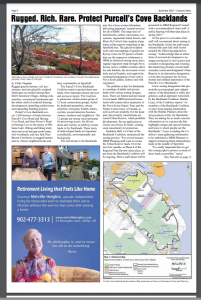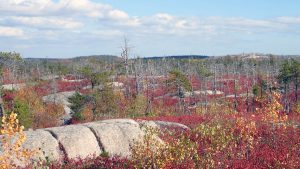
Land Ownership in the Backlands in
2016.The Clayton Developments
Ltd. property is now the Shaw
Wilderness Park. From Item
No. 14.1.8 Halifax Regional Council
Sep 20, 2016: Purcell’s Cove
Backlands – Shaw Group
/Nature Conservancy of Canada
Proposal
Click on image for larger version
The Backlands Coalition advocated for the protection of the area now named Shaw Wilderness Park and that advocacy was just the beginning. There is much more to protect in the Backlands, including wetlands, lakes and streams, a river, wilderness habitat for native plants and creatures of all sorts as well as trails for hiking and biking.
The map at right shows the many pieces of the Backlands, some protected, some Crown lands and some owned by developers
As members of the Backlands Coalition, we have been sharing information with the Halifax Planners about the special places within the Backlands. At this point in our talks with the planners, they are asking for as much concrete information as we can provide that highlights unique and special features or ways in which people use the Backlands.
Please look over the list below which outlines some examples of information we might use to amplify our message of protection for all parts of the Backlands.
Continue reading →









